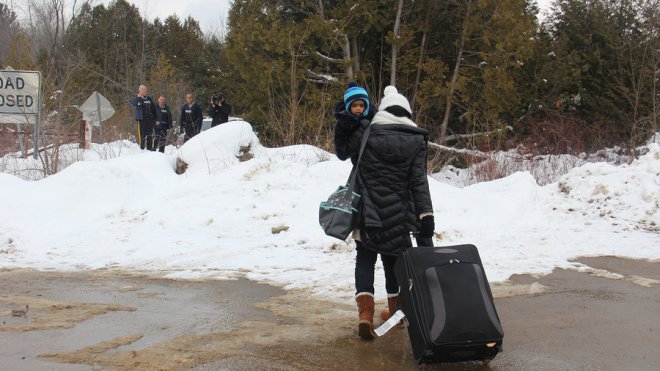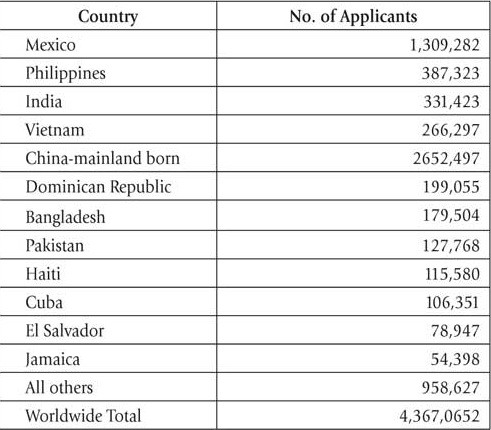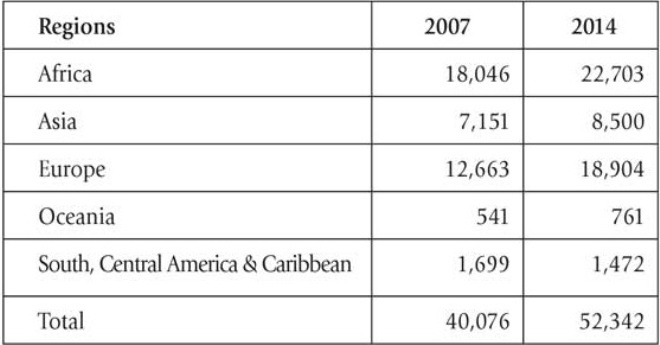Manila Times
Monday November 6, 2017

DARK clouds and a silver lining.
Canada needs 1 million immigrants by 2020 to support 5 million Canadians retiring by 2035—sparkling words from Canada’s Immigration Minister Ahmed Hussen , himself an immigrant from Somalia.
Hussen noted that with the current immigration rate and the intended increase in the next three years—310,000 in 2018, 33000 in 2019 and 340,000 in 2020 —100 percent of Canada’s population growth will be a result of immigration.
Meanwhile, less than a thousand miles away from Ottawa, the current White House occupant tweeted anew his desire to stem the flow of immigrants, this time after an Uzbekistan migrant ran down eight people to death in New York in a truck terror attack.
Sayfullo Saifov got his green card through the Diversity Visa lottery, a program signed by Republican President George Bush in 1990, designed to bring in more nationals of countries with historically low immigration rates to the US. Countries with continued oversubscription of their yearly quota—China, Dominican Republic and the Philippines—led the list.
The number of individuals with approved petitions as of November 2016 show Mexico, the Philippines, India, Vietnam, and China-mainland as the top five of 12 countries with the highest number of waiting list registrants. IMMIGRANT VISA WAITING LIST NOVEMBER 2016

Applicants from these 12 countries represent 88 percent of the total despite a 25,620 per-country limit. The reason for this is that nationals from these countries who have obtained US citizenship may petition the spouse, minor child and parent without regard to the yearly quota. Hence, the 1 million immigrants admitted to the US on the average every year.
The diversity visa program was created in response to the flood of people of color, Asians and Mexicans, Central and South Americans,when the controversial quota system was replaced in 1965 by migration based on an individual’s nation of origin.
Before that, Tom Gjelten wrote in The Atlantic, “7 of 8 immigrants in 1960 were from Europe; by 2010, nine out of 10 were coming from other parts of the world.”
The diversity visa program was initially created to help a significant number of undocumented Irish, about 150,000 of whom came to New York as students or tourists at a time when Ireland was regarded as the “sick man of Europe,” as the country experienced an economic crisis in the 1980s.
In 1986, Congress passed the Immigration and Reform Control Act of 1986 which included a one-time lottery that distributed 40,000 visas, on a first-come, first-served basis, to citizens of 36 countries who were adversely affected by the 1965 immigration law.
Of the first 10,000 claimed, 40 percent went to Irish immigrants. In 1990 the diversity visa program became permanent and currently provides up to 50,000 visas each year to immigrants from countries who did not regularly migrate to the US. Part of the bill is a provision legalizing 48,000 Irish immigrants.
About a decade ago and until 2014, nationals from Africa Asia, South, Central America and the Caribbean dominated the lottery winners and given green cards.
In Europe, the Eastern bloc nations seem to be having all the luck. Uzbekistan, Albania and Bulgaria are the top three countries in Eastern Europe with the most number of DV visa winners— Uzbekistan getting 3,032, Albania , 1,571, and Bulgaria, 1,026.
France only had 197 winners in 2007 and 326 in 2014.
Back in Canada, the Liberal Party government intends to welcome almost 1 million immigrants, “the most ambitious immigration levels in recent history.”
Minister Hussen said “immigration drives innovation and strengthens the economy,” contradicting claims that newcomers “drain Canada’s resources and become a burden on society”
In fact, the Philippines has been on the winning column of immigrants to Canada. And with the incessant anti-immigrant tweets from US President Donald Trump, those who are facing a long wait in the family-sponsored categories are looking to Canada more and more, given the country’s preferred points-based immigrant selection system.
REGIONS DOMINATING DIVERSITY VISA LOTTERY

On the other hand, with less immigrants choosing certain provinces as their final and permanent destination, Canada’s provinces have initiated programs in tandem with the current Express Entry immigrant selection system of the federal government.
Atlantic Immigration pilot program
On July 4, 2016, the Council of Atlantic Premiers and federal Atlantic ministers announced an Atlantic growth strategy. The Atlantic immigration pilot program was launched January 2017 to admit an additional of 2,000 immigrants to Atlantic Canada per year for 3 years.
The four Atlantic provinces —New Brunswick, Newfoundland and Labrador, Nova Scotia and Prince Edward Island—can choose immigrants according to the needs of the province.The Atlantic immigration pilot project has two programs for skilled workers: the Atlantic high-skilled program and the Atlantic intermediate-skilled program. An option is available to international student graduates who completes at least 2-year academic program.
In all cases, the applicant needs a job offer and must meet the requirements for work experience, English proficiency and proof of funds to successfully settle.
Provincial nomination programs
In addition, the current nomination program of each province was reviewed, revised and realigned to ensure they get their fair share of applicants admitted as permanent residents.
British Columbia,for example, has launched pilot programs of its own: the TechPilot , designed to attract skilled workers and to satisfy the demand for tech talent, in order to expand the province’s technology talent pool.
The Northeast Development Region aims to support the region’s resource-based economy— natural gas production; coal mining; hydro-electric power generation and transmission, grain and canola production as well as traditional and exotic livestock. The region is the source of 30 percent of British Columbia’s honey.
Some provinces like Manitoba encourages applicants with strong connection to ensure successful settlement. Completing at least one-year post-secondary academic study, or six months to a year of work experience gives an intending immigrant an edge in getting permanent residency.
On the federal level, the Express Entry selection system is seen to be in place for the immediate future since the program is meeting the three objectives it was set for: 1) flexibility in selection and application management; 2) responsiveness to labor market and regional needs; and 3) speed in application processing.
The Canadian government reported that in 2016, “almost 34,000 invitations to apply for permanent residence were issued to Express Entry candidates representing an increase of 3,000 from 2015. Since the launch of Express Entry, a total of 43,202 individuals (applicants and their families) have been admitted to Canada as permanent residents.
Two countries separated by a 5,5210-mile border have opposing views on immigration. The US under Trump seems to have gone to the Dark Side.
The immediate future indicates Canada would win the battle for the best and brightest of the world’s talent, skill, entrepreneurs and business persons.